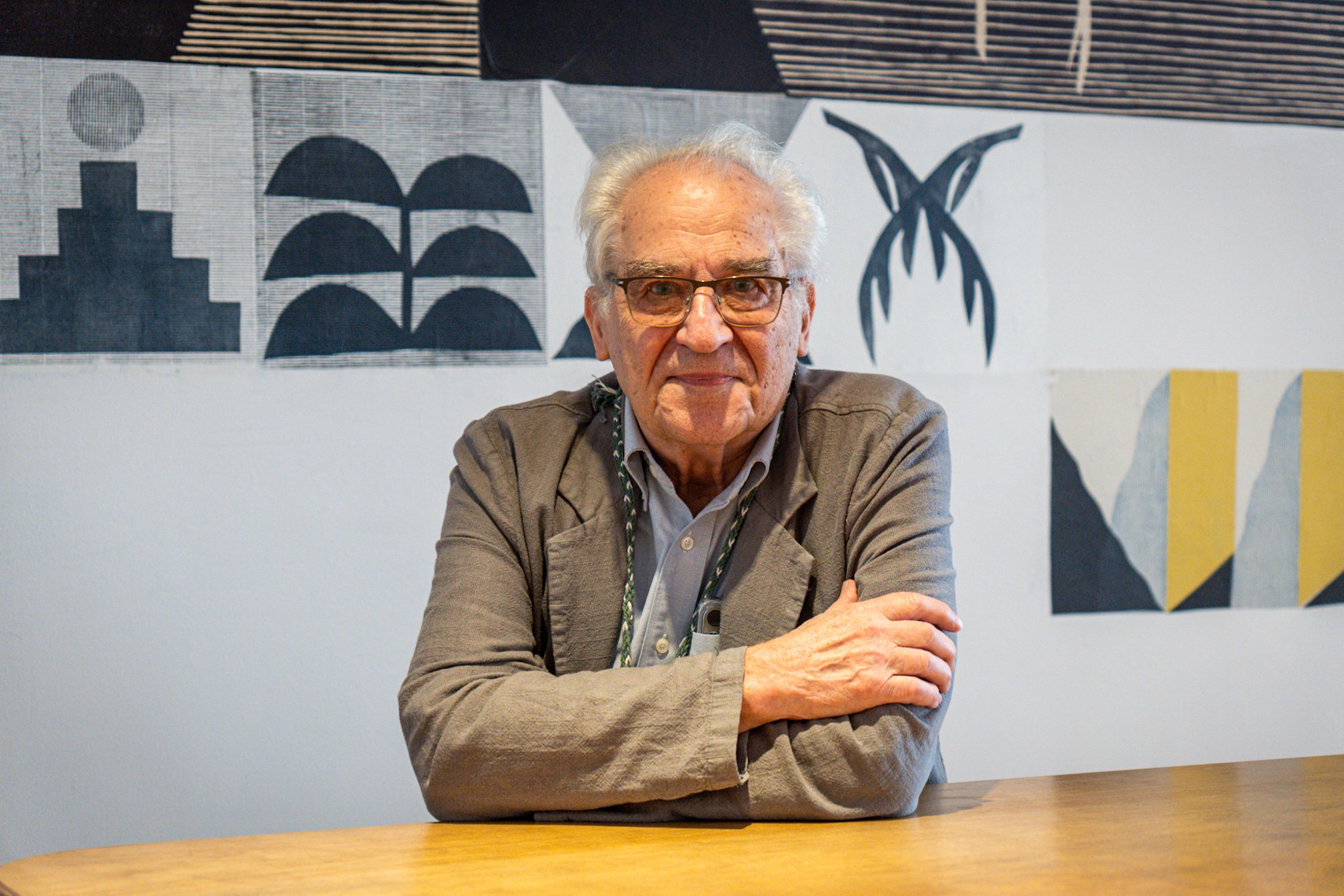"The artist is a laborer of knowledge"

Conducted by Pilar Altillo and originally published by Clarin. November 3, 2023.
Uruguayan creator Luis Camnitzer (1937) is among the invited speakers at the 55th Annual CIMAM Conference, a gathering of museum professionals held at the Moderno. Over 200 curators and directors are coming to explore the local art scene from November 9 to 11.
Luis Camnitzer (1937) was one of the invited artists to present at the 55th Annual CIMAM Conference, a gathering that brings together the world's prominent museum professionals, to be held in Buenos Aires. A Uruguayan resident of New York since 1964, he trained in his native country, both in art and architecture, but today, he is dedicated to his role as professor emeritus at the State University of New York College at Old Westbury.
He represented Uruguay at the Venice Biennale in 1988 and participated in documenta 11 and the Whitney Biennial. In 2007, he served as the pedagogical curator for the 6th Mercosur Biennial and has been involved in significant exhibitions and publications on conceptualism, including contributions to the e-flux series.
Before his arrival in Buenos Aires, Camnitzer spoke with Clarín Cultura about his presentation at the conference, titled "The Educational Turn and the Artistic Turn," offering a sharp and critical perspective. "We were given only 20 minutes each, but I will propose that the museum, instead of continuing to fight for an artistic turn in education, should work with the possible and the impossible because the activity that art allows is not only cognitive but also political, where you identify obstacles."
What ideas or experiences do you base this statement on?
When I entered art at 16, I was going to be an artist. Later, with politicization, I became a cultural worker; years later, the educational turn happened, and pedagogy entered the picture. Today, I consider the artist a laborer of knowledge. Although I don't dismiss the manufacturing part, the artist is not only an art producer but a true laborer of knowledge because they operate transdisciplinary thinking. I see the artist as a generalist who interferes with specifications, combining disorder with order, shaking everything, opening up imagination without limitations.
-And what ideas originated your lecture entitled The Educational Turn and the Artistic Turn that you are going to give in Buenos Aires?
Today, those who decide what is possible and what is not are the power structures. In 30 years, the educational turn has not succeeded in moving museums much from being showcases. The big push in education is focused on what is called STEM, i.e., careers related to science, technology, engineering, and mathematics, aiming to foster inquisitive minds, logical reasoning, and collaboration skills. It is an education for the market that is sidelining humanities and art, as scientific knowledge is associated with logical thinking. Courses trying to channel open speculation into logic are limiting the ability to imagine; this is where art is crucial.
Does this bias exclude art education?
Where these educational reforms that make up the educational turn are applied, they move away from a necessary educational critique that allows the consumption of artwork to generate knowledge. When I look at an artwork and, if I accept power structures, I start to accept that the work is an icon, and I have to decode it by entering it to appreciate it, even with the most advanced pedagogy, it's like entering a tunnel and being unable to think beyond it.
If I can stand beside the artist, be interested in the problems they are trying to solve, evaluate if they did it well, and the medium they used to do it, I can reach situations where in that process, you are learning to create and not to consume. The accepted parameter is an education for the market that promotes quantifications even when criticizing them, whereas changing them allows for a better evaluation.
As we tension art and technology, what happens to art?
Artificial intelligence (AI) works for the predictable, not generating new meanings. Art works with the unpredictable. The concrete word is mystery; art works with mystery in a secular, respectful way, identifying it and working without destroying it in an ecological balance. But it is a cognitive activity. Visual philosophy does not matter in a certain way if it does not end in an object. Influencing the way of thinking has produced very little art in conventional terms. It is also essential not to have a monopoly of productive specialists who do not have the talent to put art on the level of literacy.
Every day, while two plus two equals four, it is also possible to think that two plus two equals five. The parameters must be adjusted to move away from scientific thinking and enter into the thinking of art, which cannot be consummated except through art, as a subject that cannot be put into words and is not justified by the craftsmanship, good or bad, with which it is made. One could talk about a craftsmanship plus that allows mixing an order system that frees us from the sequence of scientific thinking of cause and effect. The works that confuse me the most are the ones I like the most. Making an emotional assessment by identifying its own limits to analyze its own power.
What do you think is the role of the museum from this perspective?
The museum should organize works based on knowledge and not manufacturing, try to know what transformation it produced in the public, and not just count the number of spectators. Attempt to measure the extent to which art transforms viewers, something that perhaps community museums are better suited for.